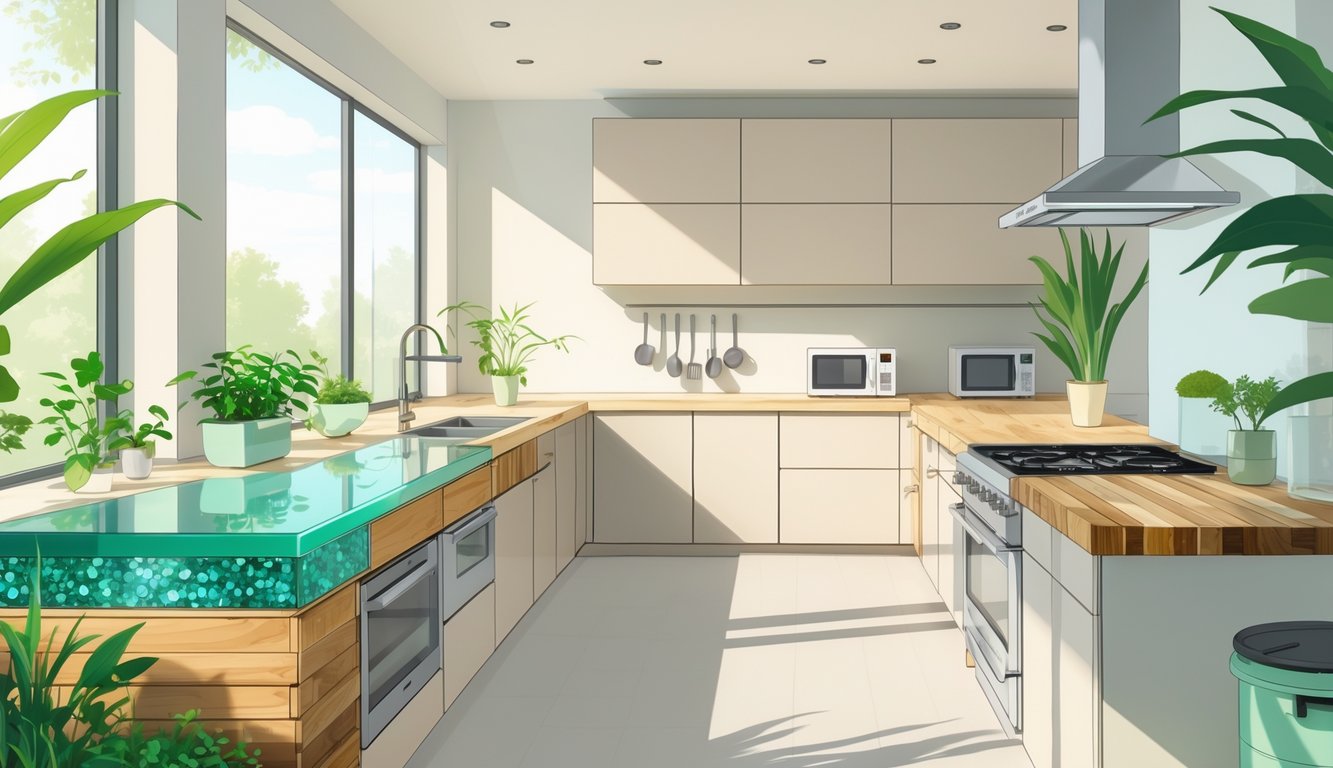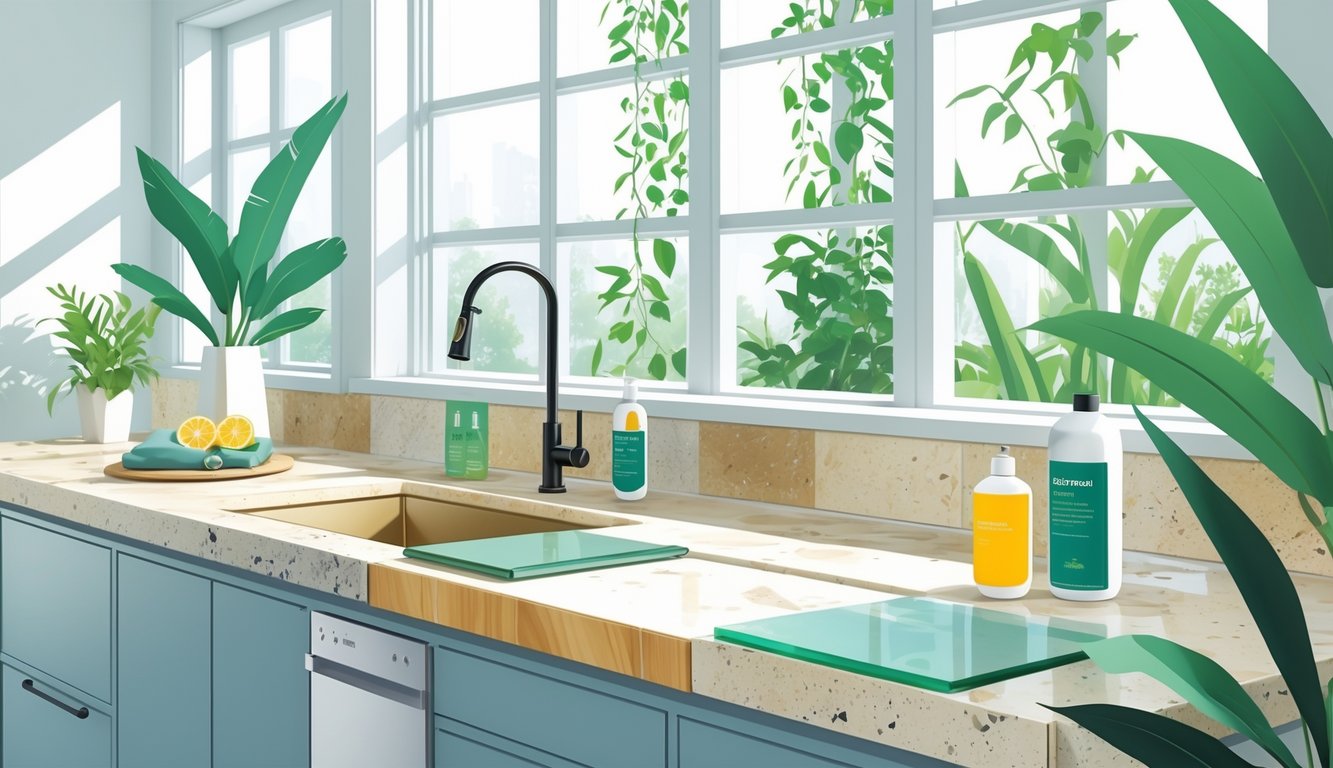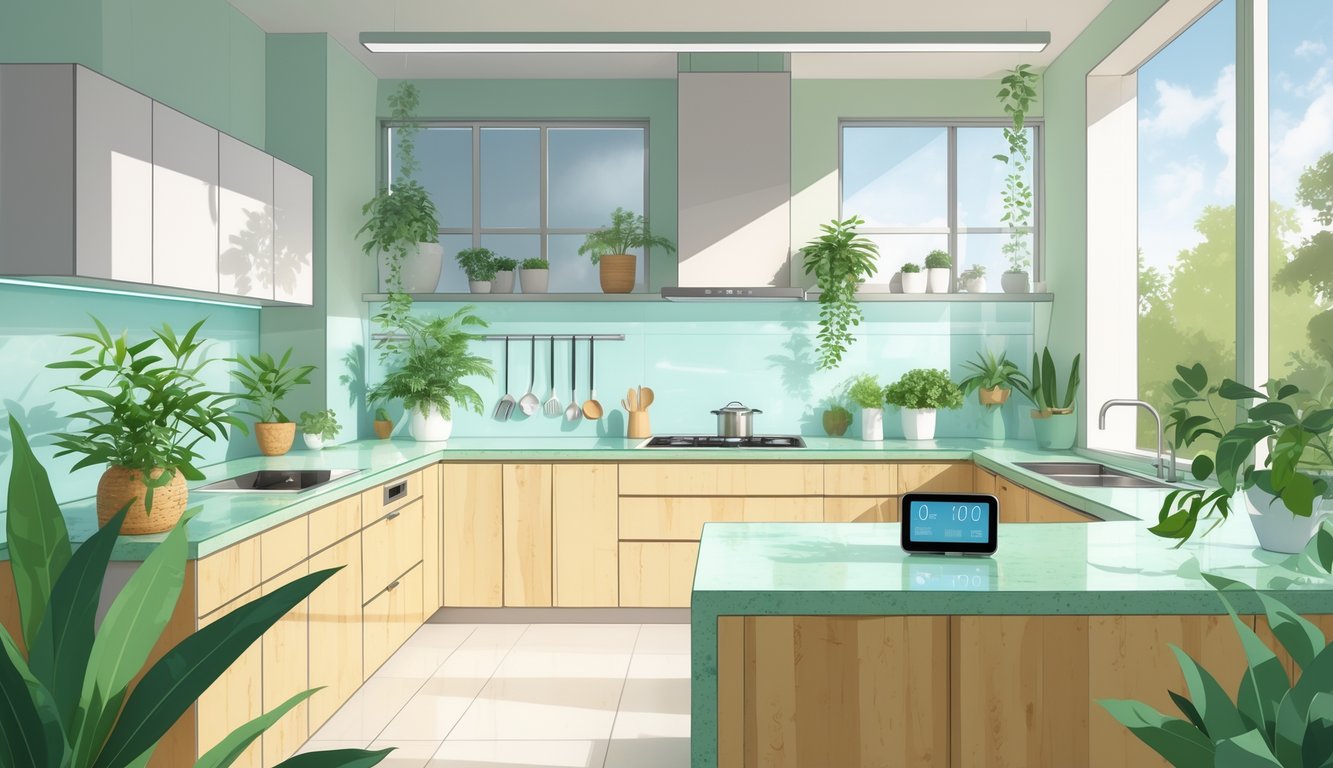
Durability and Maintenance Considerations

I keep checking the Mohs scale like it’s gospel—durability should be obvious, right? Except it never is. One day I’m scrubbing coffee off recycled glass, the next I’m explaining to someone why bamboo chips if you drop a pan. Maintenance is a whole other beast, and nobody tells you the real lifespan until the grout falls apart.
Assessing Durability in Sustainable Materials
People swear concrete, glass, and paper composite won’t scratch or crack, but I’ve watched a quartz slab survive three Thanksgivings and a fork-wielding toddler, so I trust numbers more than promises. Quartz scores a 7 on Mohs, which sounds tough, but drop a Dutch oven and you’ll see spiderweb cracks. Recycled glass? Handles some heat (supposedly up to 237°F), but who’s tossing pans straight from the oven? I’ve seen glass chips at corners every time someone skips the cutting board. That’s not just theory—I’ve had frantic texts about it. With concrete, skip the sealant or get lazy and stains become permanent. Product breakdowns admit even the most “eco” slabs get beat up by knives, oil, and heat. Nobody advertises that.
Low Maintenance Options
Don’t even start on butcher block—oil it, sand it, repeat, and it still feels like a needy pet. If you want a counter that ignores spills and doesn’t nag, your options shrink fast. Quartz? The engineered stuff shrugs off almost everything. A little soap, a cloth, no resealing, no chemistry set needed. I’ve met people who went two years without a single dull spot, which is wild for stone. Recycled paper composites are also easy—just soap and water, but don’t put anything hot down or you’ll scorch it forever. If you want zero drama, sustainable quartz and some high-density recycled stuff really do deliver, as long as you’re not slicing bread right on them. Bamboo? Eh—splinters, constant fuss, finish never lasts, but hey, at least it composts.
Long-Term Value and Lifespan
Supposedly, a countertop should outlast your mortgage. Maybe. But show me one that still looks good after fifteen years of real use. I’ve seen granite hang on for two decades with just minor etching, but it’s not exactly eco-royalty. Engineered quartz and recycled composites? Tests say they last ten-plus years if you follow the (tedious) care rules. Quartz can even bump your home’s value by nearly 5% according to industry sources. Real estate agents still call me to ask if concrete or recycled glass adds “wow,” but honestly, it depends how beat-up it looks up close. Why do people skip the annual sealant on concrete when they get a handout at install? Is everyone allergic to instructions? In the end, value isn’t just theory—lazy maintenance always shows in listing photos, long before buyers even step inside.
Indoor Air Quality and Health Factors

Sometimes I can’t stop thinking about my friend—redid her kitchen, then sneezed for weeks. No one talks about how countertops affect air quality. Off-gassing, porous surfaces, weird chemical leftovers—it all adds up, even if you never hear about it.
Impact of VOCs on Indoor Air
VOCs—volatile organic compounds—are like invisible troublemakers. Laminates, old-school sealants, even some engineered stone (yeah, the irony) release VOCs, and you’re probably not thinking about that while making toast. Studies show higher VOCs mean more headaches, more coughing, more “why do I feel gross in my own house?” moments.
Eco-friendly counters do better, way lower VOCs, but some brands still sneak in formaldehyde resins because, well, it’s cheaper. You can’t always smell it. My neighbor thought her new quartz was “fresh,” but it just triggered her allergies. This review spells out how much materials and finishes can mess with indoor air.
Non-Porous Surfaces and Hygiene
Everyone says granite is classic, but non-porous counters—recycled glass, quartz, stainless—don’t let germs hide. I’ve spent ages scrubbing butcher block, never convinced it’s actually clean. The CDC says non-porous is best for food prep because porous counters trap moisture and breed bacteria.
It’s exhausting—every “eco” counter claims “easy cleaning,” but only the truly non-porous stuff (like IceStone recycled glass, some sintered stone) avoids those microcracks that grow mold. Here’s the catch: even green sealants can sneak in VOCs. Sustainable materials give you low-chemical, hygienic surfaces, so you’re not always second-guessing your wipe-downs. Not that marble will ever stop being gorgeous, but still.
Improving Indoor Air Quality
Honestly, I’m convinced material choices mess with how “fresh” your air feels. You pick eco-friendly countertops—ones that don’t off-gas or sponge up spills—and suddenly the house doesn’t smell like a chemical warehouse. Sure, you can crank up the ventilation, but if your counters are still leeching who-knows-what, what’s the point? It’s like fighting a fire with a spray bottle.
Last summer, I went full detective mode before installing a recycled glass countertop. I grilled every store clerk about low-emission adhesives, and at least half of them stared like I’d asked for moon rocks. Some brands love to brag about their supply chain transparency—listing every chemical, every step. I mean, respect. But then you talk to “experts” and they’ll argue for hours about best practices, maintenance schedules, and which finish is “safe.” Nobody agrees. Ever.